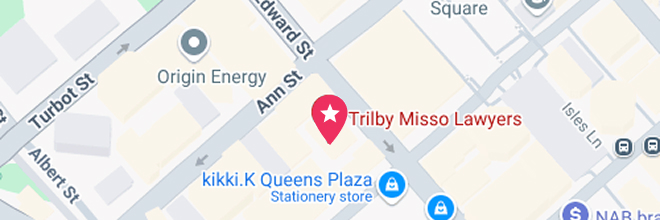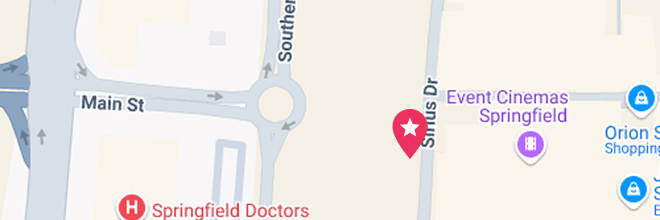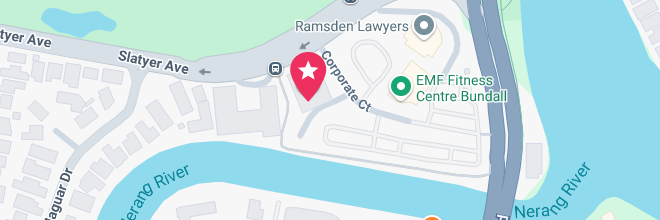Our Brisbane CBD Office
- Suite 400, Level 4/288 Edward St, Brisbane City QLD 4000
- (07) 3910 5470




A personal injury claim in Queensland is a legal process that allows someone who has been harmed due to another person’s negligence to seek compensation for the losses they have suffered. These claims are designed to help cover things like medical treatment, time off work, and the broader impact an injury may have on everyday life.
Personal injury law applies across a range of situations, including motor vehicle accidents, workplace incidents, and public liability claims. At its core, the law is about fairness — ensuring that people who are injured because of another party’s actions or inaction are not left carrying the burden on their own.
Understanding how these claims work is essential, especially because strict rules and time limits apply in Queensland. Most people are eligible to claim if their injury was caused by someone else’s negligence, but the specific steps and evidence required can vary depending on the type of incident.
For many, the idea of making a claim feels complicated. The legal terms, paperwork, and procedures can be overwhelming, particularly when recovery is already difficult. Knowing the basics — from eligibility and time limits through to what kinds of compensation may be available — can make the process feel much clearer.
This guide breaks down everything you need to know about personal injury claims in Queensland in straightforward terms. You’ll learn who can claim, how the process works, what to expect along the way, and the common misconceptions that often cause confusion.
A personal injury claim in Queensland is a legal process that allows someone who has been injured because of another person’s negligence to seek compensation for the losses caused by that injury. These claims exist to make sure that individuals are not left to carry the financial and personal burden of an accident that wasn’t their fault.
The aim of a personal injury claim is to help cover the costs and impacts of an injury. This can include:
Medical expenses – treatment, hospital stays, rehabilitation, medication.
Lost income – if time off work is needed during recovery.
Pain and suffering – recognising the physical and emotional impact of an injury.
Other related expenses – such as travel to appointments or necessary changes at home.
While money cannot undo the harm, compensation provides practical support for recovery.
Personal injury law in Queensland covers a wide range of incidents, including:
Motor vehicle accidents – car, motorcycle, truck, or pedestrian accidents.
Workplace injuries – incidents or illnesses connected to unsafe work conditions.
Public liability claims – injuries on private or public property, such as slips, trips, or falls.
Almost every personal injury claim is based on negligence. To succeed, the injured person must show that:
Someone else owed them a duty of care.
That duty of care was breached.
The breach caused the injury.
The injury led to measurable losses.
For example:
A driver running a red light and causing a crash.
An employer failing to provide safety gear.
A shop not warning customers about a wet floor.
Each of these situations demonstrates negligence that can form the basis of a personal injury claim.
In Queensland, personal injury claims are governed by strict rules under legislation such as the Personal Injuries Proceedings Act 2002 (Qld) and the Workers’ Compensation and Rehabilitation Act 2003 (Qld). These laws set out:
How claims must be lodged.
The evidence required.
The time limits that apply.
Understanding these rules is crucial because missing deadlines or failing to follow procedures can affect a person’s ability to claim.
You are generally eligible to make a personal injury claim in Queensland if your injury was caused by someone else’s negligence and it resulted in losses such as medical costs or time off work. The key requirement is proving that another party’s actions, or failure to act, directly led to your injury.
To pursue a personal injury claim in Queensland, you must usually show that:
The injury happened in Queensland.
Another person or organisation owed you a duty of care.
That duty of care was breached through negligence.
The breach caused your injury and led to measurable losses.
The claim is lodged within the strict legal time limits (generally three years).
Some of the most frequent scenarios that meet these requirements include:
Motor vehicle accidents – drivers, passengers, cyclists, or pedestrians injured in crashes caused by negligent driving.
Workplace injuries – accidents, illnesses, or repetitive strain injuries linked to unsafe work practices.
Public liability incidents – slips, trips, or falls due to unsafe property conditions on public or private land.
In some cases, people are unsure whether they qualify. For example:
If symptoms developed over time (like repetitive strain injuries).
If there were multiple contributing factors.
If liability is disputed by another party.
In these situations, it often comes down to medical evidence and whether negligence can be established.
Even if you meet all the conditions, eligibility can be affected by strict time limits. Waiting too long to act, or failing to collect evidence early, may make it harder to prove your claim. Acting promptly ensures records, witness statements, and medical reports are preserved while still fresh.
The personal injury claims process in Queensland involves a series of steps that start with seeking medical treatment and end with either a negotiated settlement or a court decision. Each step has strict rules and timeframes, so understanding the process is essential to protecting your rights.
The first step in any personal injury claim is to seek medical attention. This not only protects your health but also creates essential records that show the nature of your injuries and how they occurred. Medical reports are key evidence in every type of claim.
Once treatment has been sought, you need to notify the party responsible (or their insurer) that you intend to lodge a claim. This will depend on the type of incident:
Motor vehicle accident: Lodge a notice with the at-fault driver’s CTP insurer.
Workplace injury: Notify your employer and WorkCover Queensland.
Public liability: Inform the property owner or their insurer.
Strong claims rely on comprehensive evidence. This can include:
Photos or video of the incident scene.
Medical reports and treatment records.
Witness statements.
Proof of lost income or additional expenses.
Formal claim documents are then lodged under Queensland’s legislation, such as the Personal Injuries Proceedings Act 2002 (Qld) or the Workers’ Compensation and Rehabilitation Act 2003 (Qld). These forms outline your injuries, how the incident happened, and the compensation being sought.
Most personal injury claims are resolved without going to court. Insurers and lawyers will usually negotiate a settlement based on the evidence presented. If an agreement cannot be reached, the claim may progress to court, where a judge decides the outcome.
Deadlines matter: Missing time limits may prevent you from pursuing a claim.
Evidence is critical: The more documentation you have, the stronger your case.
Legal guidance helps: The claims process is technical, and Queensland law requires specific procedures to be followed.
By understanding these steps, injured people in Queensland can approach the process with greater clarity and confidence.
In Queensland, most personal injury claims must be lodged within three years of the date of the incident, although there are important exceptions. These time limits are strictly enforced, so acting quickly is essential to protect your right to claim.
For the majority of personal injury cases, including motor vehicle accidents, workplace incidents, and public liability claims, you have three years from the date of injury to commence court proceedings. Missing this deadline usually means you lose the right to pursue compensation.
Some circumstances extend or delay the time limit:
Minors: If the injured person is under 18, the three-year period begins from their 18th birthday.
Latent injuries: If the injury or illness only becomes apparent later (for example, asbestos exposure), the timeframe starts from when the injury was diagnosed.
Mental or physical incapacity: If someone cannot act due to incapacity, extensions may apply.
Even though you may technically have up to three years, it is best to act as soon as possible because:
Evidence such as CCTV, photos, and witness memories can fade or be lost.
Medical records are clearer and more reliable when collected early.
Some notice requirements under Queensland law require earlier action than three years.
Limitation of Actions Act 1974 (Qld) sets out the general three-year rule.
Personal Injuries Proceedings Act 2002 (Qld) and the Workers’ Compensation and Rehabilitation Act 2003 (Qld) contain specific notice and procedural deadlines.
Quick Takeaway
Most personal injury claims in Queensland must be brought within three years, but minors, latent injuries, and incapacity can change this rule. Acting quickly ensures evidence is preserved and statutory deadlines are met.
Negligence in a personal injury claim means that someone failed to take reasonable care, and their actions (or inaction) directly caused your injury and losses. Liability is about proving that this failure makes them legally responsible for the harm suffered.
To establish negligence in Queensland, four elements must usually be proven:
Duty of Care – The other party owed you a legal duty (e.g. drivers must drive safely, employers must provide safe workplaces).
Breach of Duty – That duty was broken through careless, reckless, or unsafe behaviour.
Causation – The breach directly caused your injury.
Damages – The injury resulted in measurable losses, such as medical expenses or time off work.
Motor vehicle accidents: A driver speeding through a red light and hitting another car.
Workplace incidents: An employer failing to supply protective gear for machinery.
Public liability cases: A business not placing a warning sign on a wet floor.
In each example, the responsible party failed in their duty of care, leading to someone else being injured.
Without proving negligence and liability, a personal injury claim cannot succeed. This is because the law requires a clear link between the injury and another person’s breach of duty. Establishing liability is what gives an injured person the legal right to seek compensation.
Queensland legislation, including the Civil Liability Act 2003 (Qld), sets out the principles courts use to decide whether negligence occurred. These laws define what counts as “reasonable care” and provide guidance on liability in different scenarios.
Quick Takeaway
Negligence is the foundation of personal injury law — if you can prove another person’s duty of care was breached and it caused your injury, they may be held legally liable.
In Queensland, the compensation you can claim in a personal injury matter depends on the losses caused by the injury, but it usually includes medical costs, lost income, pain and suffering, and other expenses linked to recovery. The law recognises both financial and non-financial impacts.
Medical Expenses
Hospital and surgery costs.
GP and specialist visits.
Rehabilitation such as physiotherapy or occupational therapy.
Ongoing medication or treatment needs.
Lost Wages and Future Earning Capacity
Income lost while unable to work.
Reduced ability to earn income in the future if the injury affects long-term employment.
Pain and Suffering
Acknowledges the physical discomfort and emotional distress caused by the injury.
Recognises impacts on enjoyment of life, hobbies, or relationships.
Other Related Costs
Travel to medical appointments.
Home or vehicle modifications if required.
Assistance with daily tasks or support services.
Compensation is guided by legislation such as the Civil Liability Act 2003 (Qld) and the Workers’ Compensation and Rehabilitation Act 2003 (Qld). Courts and insurers assess:
The severity of the injury.
How it has affected work and daily living.
The medical evidence supporting the claim.
Quick Takeaway
Compensation in Queensland personal injury claims can cover medical expenses, lost income, pain and suffering, and related costs, depending on the evidence and impact of the injury.
You can maximise your personal injury claim in Queensland by acting quickly, keeping thorough records, following medical advice, and seeking legal guidance to ensure your claim is properly managed. The strength of your evidence and the timing of your actions often make the biggest difference.
Documentation is the foundation of a strong claim. Make sure you keep:
Medical records – reports, treatment notes, and rehabilitation plans.
Financial proof – payslips, invoices, or tax returns to show income loss.
Accident evidence – photos, incident reports, or witness statements.
The more detail you preserve, the easier it is to demonstrate the impact of the injury.
Insurance companies and courts consider whether you followed medical instructions. Not attending appointments, ignoring treatment, or delaying care may be used against you. Compliance shows you are taking recovery seriously.
Some mistakes can weaken a claim, such as:
Delaying action: Waiting too long risks losing evidence or missing deadlines.
Miscommunication: Giving inconsistent information to insurers or doctors.
Settling too early: Accepting an offer before the full extent of your injuries is known.
Queensland law sets strict rules for lodging and progressing claims. Experienced personal injury lawyers can:
Ensure notice requirements are met.
Collect and present evidence effectively.
Negotiate fairly with insurers.
Quick Takeaway
To maximise a personal injury claim in Queensland, act promptly, document everything, follow medical advice, and avoid settling before the long-term impacts are clear.
A no win no fee lawyer is important in personal injury claims because it allows injured people in Queensland to access legal help without paying upfront costs. This arrangement removes a major barrier to pursuing a claim, ensuring that financial pressure does not prevent someone from seeking their legal rights.
Under this model, you only pay legal fees if your case is successful. If the claim does not result in compensation, you do not pay the lawyer’s professional fees. This arrangement is widely used in Queensland for personal injury claims.
Accessibility: Legal representation is available regardless of financial position.
Reduced stress: Injured people can focus on recovery instead of worrying about legal bills.
Motivated representation: Lawyers have an incentive to work carefully on cases where their fees depend on success.
When selecting a no win no fee lawyer in Queensland, consider:
Experience: Look for someone with expertise in motor vehicle, workplace, and public liability claims.
Transparency: Ensure costs are explained clearly, including potential disbursements.
Local knowledge: Laws and processes can vary, so a lawyer familiar with Queensland’s system is valuable.
Quick Takeaway
No win no fee lawyers make personal injury claims more accessible in Queensland by removing upfront costs and ensuring legal support is available to everyone.
Many people in Queensland hesitate to make a personal injury claim because of common myths and misunderstandings. Clearing up these misconceptions helps people better understand their rights and the process.
Reality: Compensation is about more than money — it is designed to cover the practical impacts of an injury, such as medical expenses, lost income, and rehabilitation needs. The focus is on helping people manage the consequences of their injury.
Reality: Most personal injury claims in Queensland are resolved through negotiation with insurers. Court is generally a last resort if settlement cannot be reached.
Reality: Even injuries that appear minor can lead to significant medical costs or time off work. What matters is whether the injury resulted from someone else’s negligence and caused measurable losses.
Reality: Personal injury law is governed by strict procedures and deadlines. While you can represent yourself, missing steps or failing to provide adequate evidence may reduce the chance of a successful claim.
Quick Takeaway
Personal injury claims in Queensland are not just about payouts or going to court — they are about ensuring the impacts of an injury caused by negligence are recognised and supported within the legal system.
How long do I have to make a personal injury claim in Queensland?
Most claims must be made within three years of the incident, although there are exceptions for minors, latent injuries, or incapacity.
Do I need to go to court for a personal injury claim?
Not usually. Most claims in Queensland are settled through negotiation before reaching court.
Can I make a claim if my injury seems minor?
Yes. Even minor injuries may qualify if they cause medical costs, time off work, or other measurable losses.
What evidence do I need for a personal injury claim?
Medical records, photos, witness statements, and financial documents are typically required to support your claim.
Who pays the compensation in a personal injury claim?
Usually, it is the insurer of the party found to be at fault, such as a CTP insurer, WorkCover, or a public liability insurer.
What types of accidents are covered under personal injury law?
Common examples include motor vehicle accidents, workplace injuries, and incidents in public or private places.
How long does it take for a personal injury claim to resolve?
Timeframes vary, but many claims are resolved within 12–18 months, depending on the complexity and negotiations involved.
Do I need a lawyer for a personal injury claim in Queensland?
While it is possible to lodge a claim yourself, strict laws and procedures apply, so legal guidance helps ensure the process is followed correctly.
For more detailed information on personal injury claims in Queensland, these official resources may help:
WorkSafe Queensland — Compensation claims
Overview of making a workers’ compensation claim, the process, and available support.
https://www.worksafe.qld.gov.au/claims-and-insurance/compensation-claims
Queensland Courts — Procedural fact sheets (civil)
Guides on civil claims, including forms, filing requirements, and court processes.
https://www.courts.qld.gov.au/going-to-court/procedural-fact-sheets-civil-supreme-and-district-courts
Business Queensland — Business insurance
Information on public liability insurance and other risk management protections.
https://www.business.qld.gov.au/running-business/risk/insurance
Kathryn is Trilby Misso’s Chief Executive Officer.
Meet KathrynUse this simple online tool and find out if you have a claim in less than thirty seconds. You can choose to remain anonymous.
Your next step is a small one. All you need to do is give us a call on 07 3910 5470 or complete this form here to arrange a quick chat.
During this initial conversation, we will:

We understand that taking legal action can be stressful, and we’ll do all we can to ease your concerns.
The chat can take place at our place, your place, or by phone. There is no cost, no pressure, and no obligation.
Call 07 3910 5470 or fill out this form, and we’ll get back to you within 2 hours (during business hours). We look forward to meeting you.
enquire now